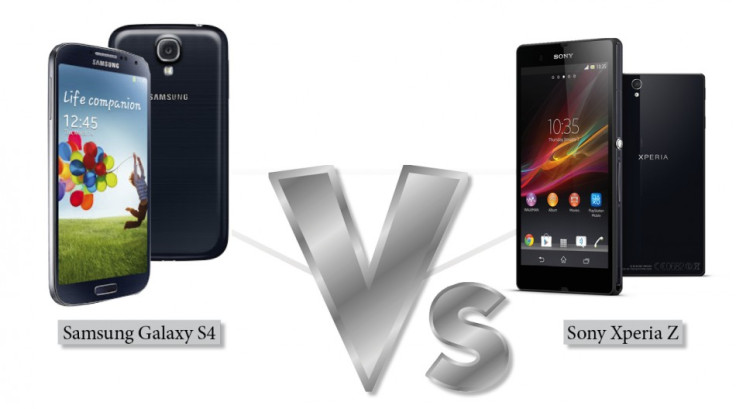Samsung Galaxy S4 vs Sony Xperia Z [VIDEO]

Not usually mentioned in the same breath as Samsung and Apple, Sony has returned to the high-end smartphone scene with the Xperia Z, a 5in smartphone with full HD screen, quad-core processor and waterproofing.
We see how the Xperia Z stacks up against the new Galaxy S4, which Samsung has just unveiled at its Unpacked media event in New York.
Display
The Galaxy S4 and Xperia Z both have a 5in screen with a full HD resolution of 1080 x 1920, giving them a pixel density of 441 pixels per inch, significantly higher than the iPhone 5's Retina screen, which manages just 326ppi.
Above the display, both the Sony and Samsung have full HD front-facing cameras with 2.2- and 2.1-megapixel resolution respectively.
The Galaxy S4 uses its front-facing camera for a number of 'Smart screen' functions. With these turned on via the Settings app, the S4 monitors your eye movement so closely that pages can be scrolled up when you reach the bottom of a paragraph, and video is paused when you look away.
When reviewing the Galaxy S3 I turned off Smart Stay - keeping the screen unlocked until you look away - because it seemed pointless and even got in the way, but I read a lot on my phone, so if the screen can scroll automatically I can see me using the feature - and it means you can use the phone one-handed without fear of dropping it by stretching your thumb up to reach the display.
Processor
Powered by an Exynos 5 Octa chip, the Galaxy S4 is technically a quad-core smartphone with eight cores at its disposal. Dubbed big.LITTLE, the phone can make use of a 1.8GHz quad-core processor for heavy work like 3D gaming and HD video, but can also rely on a 1.2GHz quad-core processor for less intensive tasks, like text messaging and Twitter.
This way, the Galaxy S4 can save on battery life while still having huge power when it's needed.
Although it misses out on the clever big.LITTLE technology, the Sony Xperia Z has an almost-equally powerful 1.5GHz quad-core processor from Qualcomm and 2GB of RAM - same as the S4.
For everyday use you will be hard-pressed to spot any difference in performance between the two phones, but if the octa-core technology of the S4 can stretch battery life to two full days - something all smartphones find a challenge - then the Samsung could come out on top.
Operating System
The two smartphones both use Google's Android 4.2 (Jelly Bean) OS and both cover the user interface with their own custom skins.
Both systems have their fans and critics, but anyone looking for a smartphone with pure Android should consider the LG Nexus 4, which is much cheaper than any of its rivals.
Samsung has included its 'designed for humans, inspired by nature' user interface with the S4, so annoying beeps and bloops every time you press the screen is the order of the day. Thankfully, this can be turned off, leaving an attractive and easy-to-use operating system.
Anyone who has used a Galaxy product in the last year or so will feel right at home with the S4.
Opting for TouchWiz or Sony's Android skin is purely down to personal preference, and aesthetic preference at that. We'll be able to compare the two interfaces more closely when the S4 goes on sale.
Camera
Similarities between the S4 and Xperia Z continue when you turn them over, as both have a 13-megapixel camera on the back with LED flash and full 1080p HD video recording.
Deciding to opt for more megapixels than a change in technology - as with the HTC One and Nokia Lumia 920 - the Sony and Samsung should both produce impressive photos, but may struggle in low light, especially against the Lumia with its optical image stabilisation.
Sony has an uphill struggle to convince consumers that the Xperia Z is worth investing in, whereas Samsung has the benefit of already proving its worth with the S2, S3 and Note 2, so for the South Korean company the work is mostly already done - we just worry that with the S4 it may have become complacent, as Apple was criticised of with the iPhone 4S.
© Copyright IBTimes 2025. All rights reserved.






















